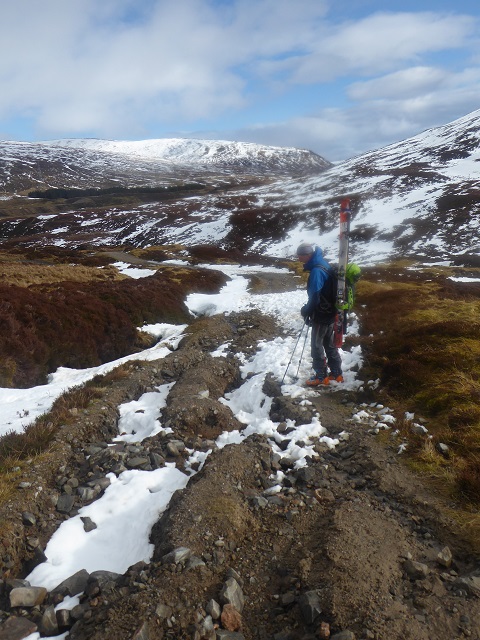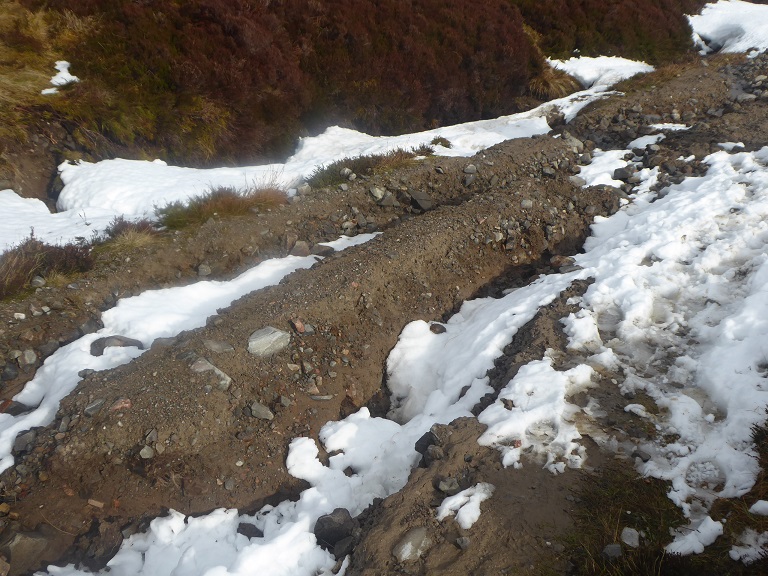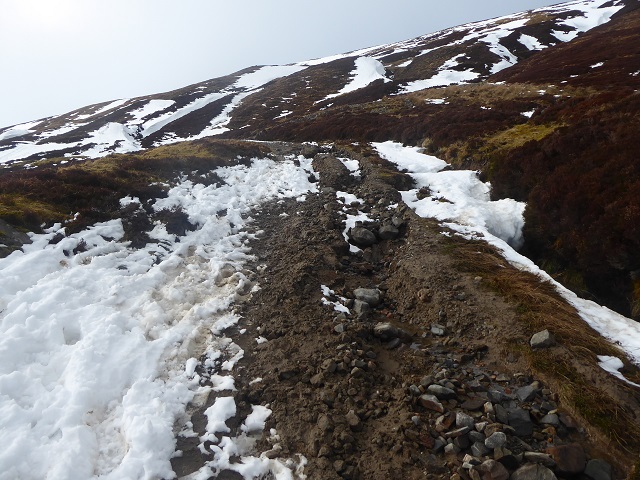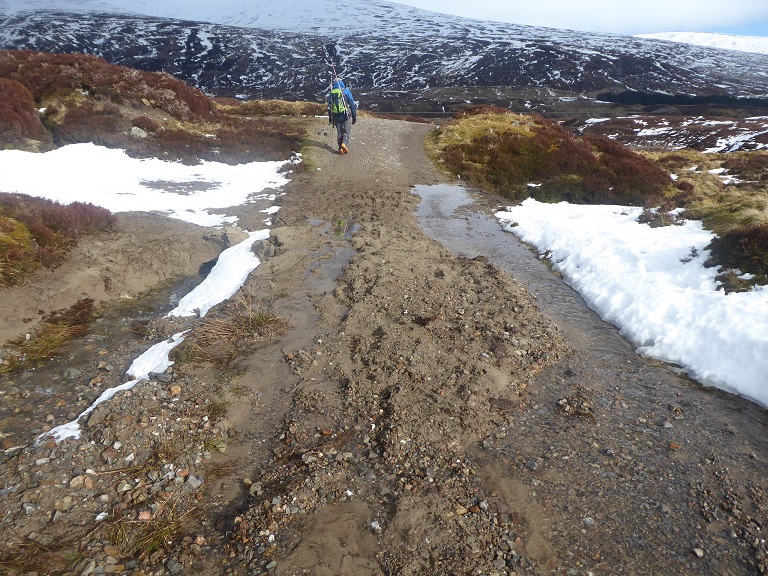
Yesterday, I enjoyed a ski tour up Sgairneach Mhor in the Drumochter Hills, accessed by the track up Coire Dhomhain and a bridge over the river. Unlike many tracks in the Drumochter Hills, this one is old and appears on the 1981 OS Second Series 1:50,000 map. The steeper sections, however, have been badly eroded and one has washed out entirely so that the track is now unusable to vehicles.

This should come as no surprise as the steeper section exceed the maximum recommended by Scottish Natural Heritage in their Guidance on “Constructed Tracks in the Uplands” (see here):
“Tracks designed to accommodate light four wheel vehicles should normally have a maximum gradient of 14% or 1 in 7.”
Despite this recommendation, both our National Parks as Planning Authorities and SNH itself continue to allow new tracks to be built that exceed 1 in 7, storing up problems for the future. Those problems include impact on the landscape, increased flooding and sediment being washed off into river systems.
The Scottish Government has made hilltracks one of the top priorities for its forthcoming review of Permitted Development Rights, which governs which the types of developments that don’t need full planning permission. The Coire Domhain track illustrates that the Scottish Government Review needs to consider not just what happens with new hill tracks, but how its going to address the damaging legacy of poorly designed and constructed tracks that have been built under permitted development rights.
One solution would be to require full planning permission for ALL new tracks but continue with the Prior Notification system for track repairs and upgrades (see here). That would allow the Cairngorms National Park Authority to ensure that any repair to the Coire Domhain track, and others like it, was well designed and fit for the purpose.

If a track couldn’t be properly repaired, because it was too steep for example, and couldn’t be diverted to another more appropriate line, then Planning Authorities would also need powers to remove the tracks.
In this case, however, Scottish Natural Heritage could also address issues if they were prepared to take on the landowner. This track is within the Drumochter Hills Special Area of Conservation and Site of Scientific Interest, i.e it is with one of Scotland’s most highly protected landscapes. In such areas landowners are legally required to see consent from SNH for certain operations. Among those listed for this site are:
“13b Modification of the structure of water courses (e.g. rivers, streams, springs, ditches, drains), including their banks and beds, as by re-alignment, regrading and dredging.
21 Construction, removal or destruction of tracks, walls, fences, hardstands, banks, ditches or other earthworks, or the laying, maintenance or removal of pipelines and cables, above or below ground.”

SNH could therefore require the landowner to provide plans to them BEFORE any work takes place to repair this track and, if its not possible to do this according to SNH’s Best Practice Guidance, to work with the landowner to remove the track and restore the damage that has been done to the protected site. That would set a good precedent for all the other tracks that SNH have allowed to proliferate over the Drumochter Hills protected area in the last 10 years or so, causing serious damage to habitats and the landscape.
Your blog on what needs to happen with hill tracks is spot on. The Scottish Government needs to be brave and require full planning approval for all new hill tracks, with prior notification for any maintenance or upgrades on existing tracks. However, unless it was made clear to planning authorities that they must enforce good practice design standards such as the standards advised by SNH, planning authorities will just ‘bend with the wind ‘. It’s down to the Scottish Government Planning & Architecture Dept to start to provide planning authorities with guidance which gives them the powers to enforce good practice, and dispense with the wishy-washy guidance which in the main warns planning authorities to be careful in refusing planning applications or enforcing planning conditions.